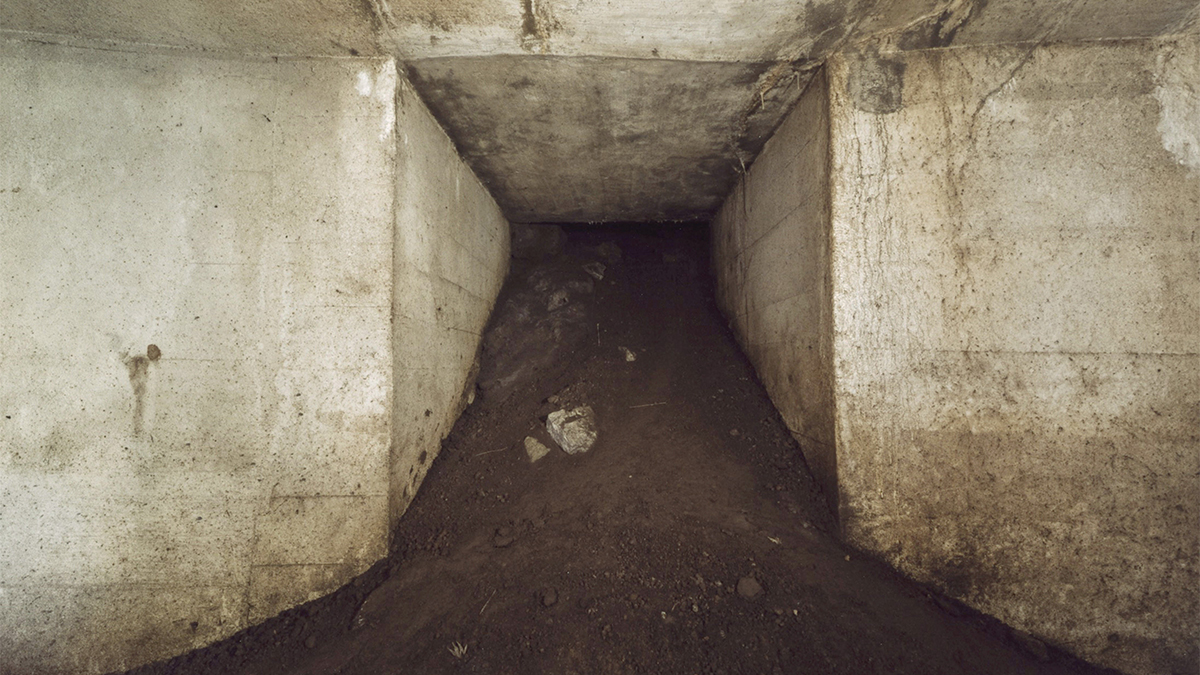Japan is making major changes to its defence preparations, reflecting a shift in how the country approaches national security in today’s increasingly unstable world. For many years, Japan relied on the peace-focussed rules in its postwar constitution, which kept it from building up its military too much.
But now, Japan is quickly improving its defence systems because of growing fears about missile threats from nearby countries. As part of this major change, Japan has started a large project to build enough bomb shelters for 10 million people. This includes making more underground and long-term shelters, especially near Taiwan and other islands in the southwest, as reported by Nikkei Asia.
This is more than just building new shelters—it shows a deeper change in how Japan sees its role. The country is working to become a stronger and more protected island combining stronger buildings and shelters with more military readiness.
This change was clearly stated in Japan’s updated National Security Strategy, which came out in December 2022. In that report, Japan said its security situation is now “more severe and complex than at any other time in the post-Second World War period,” showing just how serious the country views today’s threats.
Doubling shelter capacity: A race against time
According to the Cabinet Secretariat, Japan now has more than 58,000 designated bomb shelters. But as reported by Nikkei Asia, only about 3,900 of these—or around 7 per cent—are underground, which many see as the most important type for protecting people from modern missile attacks.
These underground shelters can currently hold only 5 per cent of Japan’s population. To fix this, the government has set a new goal: to increase capacity so over 10 million people can be protected, nearly doubling the current limit of 6 million.
As part of this effort, the government is looking at 1,489 more possible sites for underground shelters. This could add around 4 million square meters to the current total of 4.91 million square meters of shelter space.
The Japan Times explained that using the short-stay space standard of 0.825 square metres per person, this would be enough room to protect more than 10 million people during an emergency. These shelters are being divided into short-term spaces for quick safety and long-term ones where people could stay for up to two weeks.
The areas closest to Taiwan are getting special attention, especially the Sakishima island chain. According to The Japan News, this includes Ishigaki, Miyakojima, Yonaguni, Taketomi and the village of Tarama. These islands are considered frontline areas if a conflict involving Taiwan breaks out with Yonaguni being just 110 kilometres away from Taiwan and lacking many options for evacuating large groups of people.
To protect the residents, the Japanese government is planning to build strong, new shelters that can hold people for about two weeks. The Japan Times reported that these shelters will have 30-centimetre-thick reinforced walls, multiple entry and exit points, emergency ventilation systems, food and water supplies and strong structures that can resist missile strikes and bombings from the air.
In Yonaguni Town, local leaders have asked the government for help building these shelters. Defence Minister Gen Nakatani, as quoted by The Japan News said that people in the area are very concerned and agreed that “strengthening the defence system in the Nansei area is an urgent issue.” To support this, the defence ministry has included funding in the 2025 budget to help pay for building these vital shelters in the region.
Tokyo’s underground response
Japan’s capital, Tokyo, is also getting ready for possible major emergencies. According to The Japan News, the Tokyo Metropolitan Government is planning to build its first long-term underground shelter inside Azabu-juban Station on the Toei Oedo subway line.
This new shelter is meant to protect people if the city ever faces a long-lasting missile attack since many citizens are worried that current evacuation centres wouldn’t be strong enough to handle such a situation.
The planned shelter will have food and water supplies, emergency electricity, air ventilation and communication systems to help people stay safe for an extended period. But as The Japan News also pointed out, the project comes with big money and planning problems. Each shelter could cost hundreds of millions of yen, so making similar shelters across the entire city would be very hard unless private companies help.
Tokyo is now looking at creative ideas like turning underground parking areas into shelters and encouraging private builders to create spaces that can be used both in everyday life and during emergencies.
A psychological and social turning point
Japan’s major push to build more bomb shelters shows not just a change in defence planning but also a big shift in how people think and feel about safety. For many years, civil defence wasn’t a big focus in Japan. It was seen as something from the past, especially because the country followed a pacifist path and relied on protection from the US through its nuclear shield.
But now, both the government and the public are starting to face the hard truth that a military conflict in East Asia could directly affect Japan.
This change in thinking has two sides. First, building more shelters makes people more aware that Japan could be in real danger—it’s a sign that the country is no longer untouched by rising tensions in the region. But at the same time, it helps create a stronger feeling of unity and readiness.
Prime Minister Shigeru Ishiba, who has supported civil defence efforts for a long time saying that showing a strong attitude—like saying, “Shoot if you can, but not a single Japanese citizen will die”—can actually help prevent attacks.
Businesses are also reacting to the possible risks. A Kyodo News survey shared by the Eurasian Times found that 53 per cent of Japan’s major companies have already made emergency plans in case a crisis breaks out over Taiwan.
These plans include evacuation routes and storing supplies. This shows that Japanese companies are increasingly worried about how a conflict could impact them, especially because Japan has close business and investment ties with Taiwan.
Shelter specifications and comparative insights
To make sure the new shelters work well, Japan is setting strict safety and building standards. In early 2025, the government carried out a nationwide survey to check if existing shelters were strong and safe enough under the Civil Protection Law.
As reported by The Japan Times, the results showed that 61 per cent of shelters had walls that met the required thickness of 30 centimetres. However, only 46 per cent had strong enough ceilings to handle powerful impacts. On a more positive note, 73 per cent of the shelters had the needed multiple entry points for people to get in and out safely.
Japan is also looking at how other countries have built their shelter systems. According to The Japan Times, Finland has shelters for 86 per cent of its population. These are designed to protect people from chemical attacks and can support three-day stays.
South Korea has gone even further, with shelters that could hold 331 per cent of its population. All of them are underground and fully equipped. When compared to these countries, Japan’s shelters are still very different in terms of how well they are built and what they offer. This shows just how much work Japan still has to do to reach similar levels of protection.
Strategic context: Deterrence by denial
Japan’s shelter-building campaign is not happening on its own. It’s a key part of a bigger plan to stop threats before they happen, as explained in the country’s major defence update from 2022.
In the National Security Strategy, National Defence Strategy and Defence Buildup Program released that year, Japan laid out its goal to raise defence spending to 2 per cent of its GDP by 2027 and to add counterstrike missile systems to its defences.
Japan’s new defence thinking is focussed on what it calls “deterrence by denial.” This means making it harder for enemies to succeed if they attack, by strengthening both military and civilian defences. The basic idea is that if a country like Japan can take a hit and keep going, then enemies may be less likely to attack in the first place.
This way of thinking is especially important now, as China becomes more forceful over the issue of Taiwan. Tokyo understands that if China takes action against Taiwan, it could also affect Japan—especially in places like the Senkaku Islands, which both Japan and China claim.
So, Japan’s efforts to improve civil defence are not just about keeping people safe during an attack. They are also about sending a clear message to potential enemies: attacking Japan won’t be easy or worth it.
Community preparedness: Civil defence as civic duty
Local communities in Japan are also playing a big role in getting ready for emergencies. According to The Japan Times, five cities and towns in the Sakishima Islands were picked for the first round of shelter construction because they had already done evacuation planning and run civil defence drills.
This shows how important it is for everyday people to be involved in preparing for disasters. These drills are not done alone—they are organised together with both the prefectural and national governments adding an important layer of safety and teamwork.
Local governments are also working closely with the central government to make evacuation maps, let people know where the nearest shelters are and improve emergency alert systems. In some areas, residents are being taught basic survival skills and first aid bringing back old community traditions of helping each other during crises—traditions that had slowly disappeared after the war.
Costs and challenges
Even with strong progress, Japan faces many challenges ahead. Building strong shelters, especially underground ones designed for long stays, costs a lot of money. The Tokyo metropolitan government has already said that to build many of these shelters across the city, help from private companies will be needed.
Japan also needs to balance civil defence needs with current laws like the Building Standards Act, which might not cover situations like wartime attacks. The government plans to create a clear policy by the end of fiscal 2026 that will guide shelter construction and may update these laws, according to The Japan Times.
Another big issue is protection against unusual threats like nuclear, biological and chemical (NBC) attacks. Unlike Finland, Japan’s current shelter plans do not include systems to defend against these NBC threats, leaving an important weakness in the country’s civil defence system.
Japan’s focus on building strong civil defence is a major part of its security identity in the 21st century. The plan to expand shelters, especially near Taiwan, shows that Japan is seriously facing regional dangers and choosing to be prepared and resilient.
This change from a mostly peaceful approach to one of defensive readiness is more than just a strategy—it is a deep shift in how Japan thinks about its future safety. If done well, this plan could help Japan delay or stop attacks and give the country more influence in keeping peace.


)

)
)
)
)
)
)
)
)



